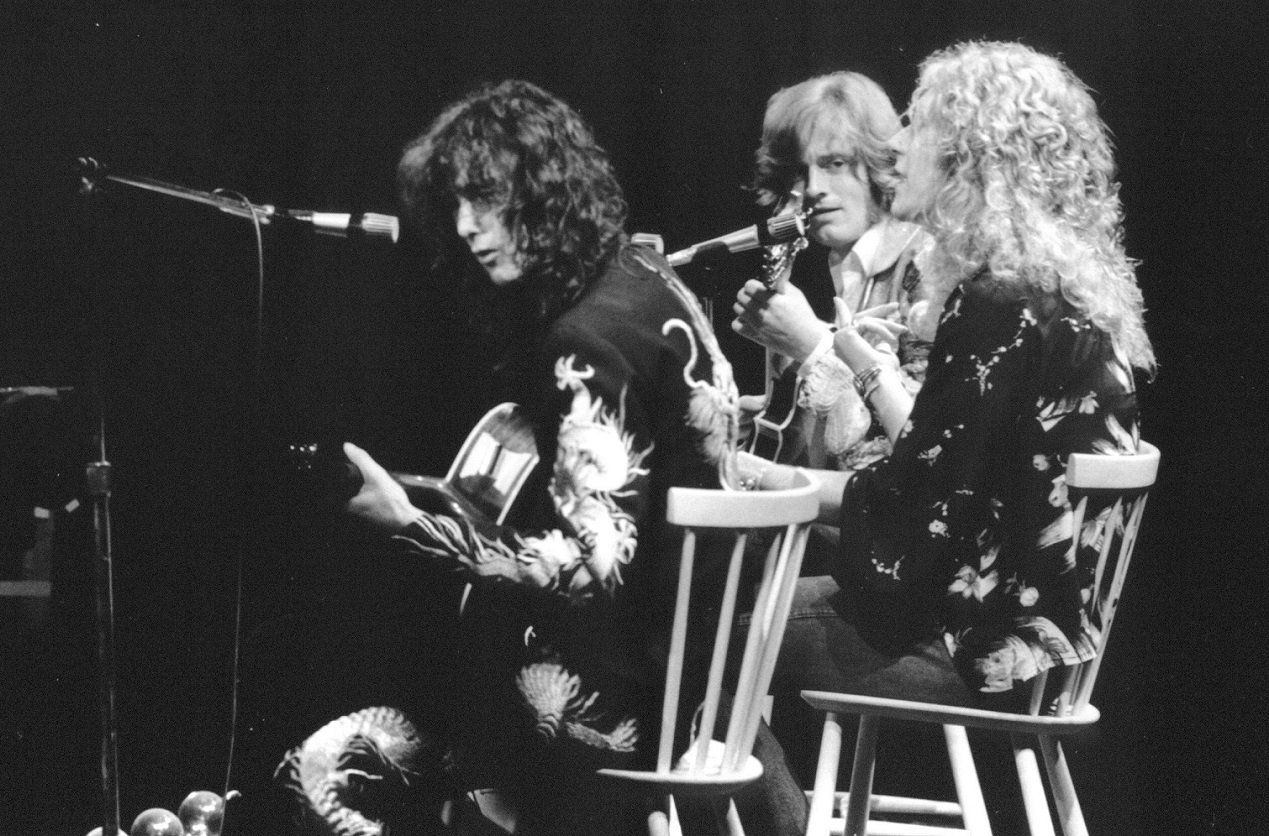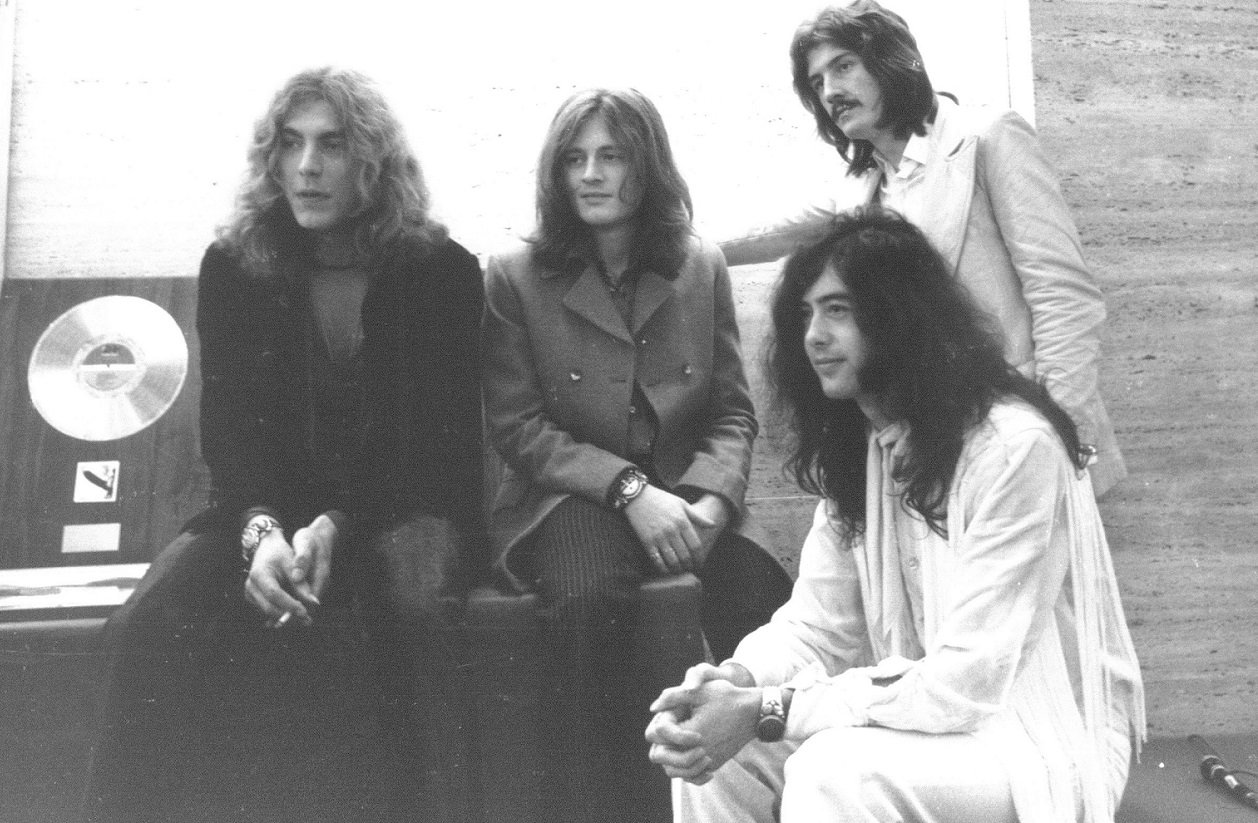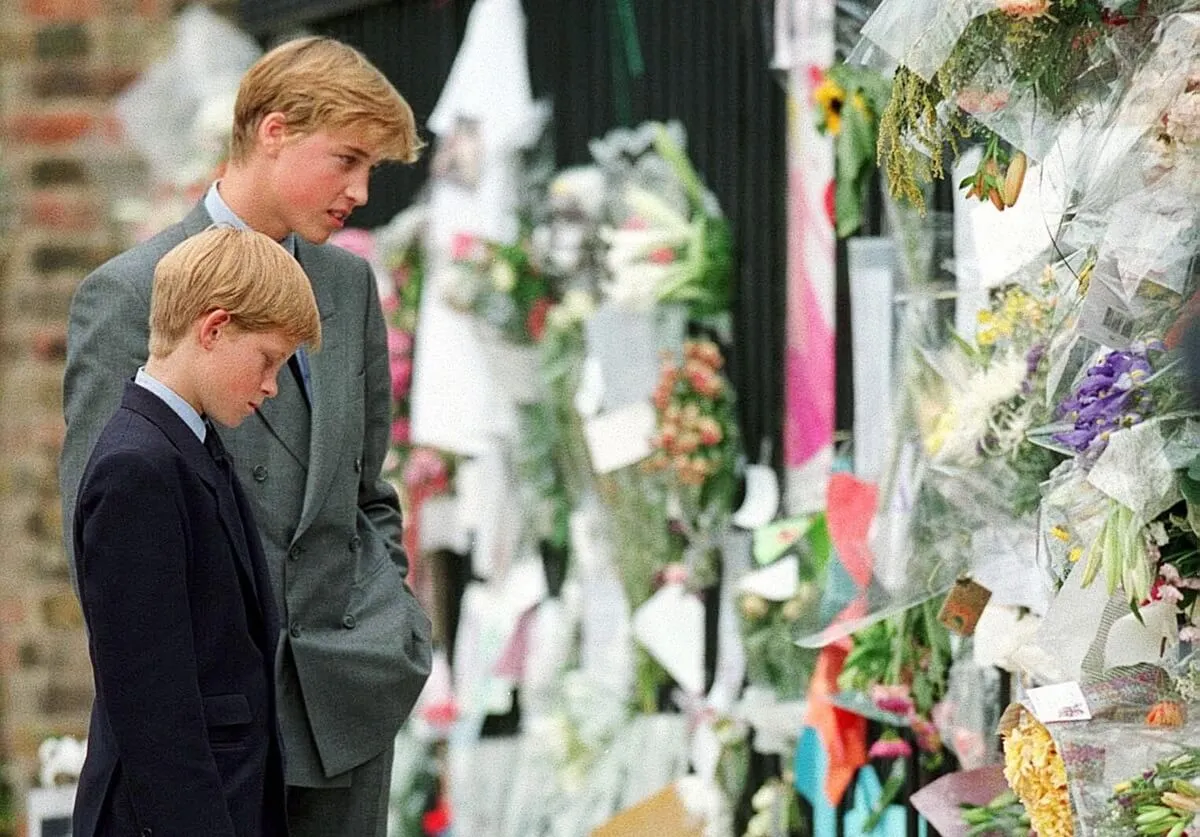The 1st Led Zeppelin Album to Feature All Original Songs
When Led Zeppelin went into the studio to record its debut album in September ’68, the band hadn’t yet secured a record deal. What’s more, they’d only banded together six weeks earlier. With three original songs to record, the newly minted Zep focused on imaginative interpretations of blues and folk tracks (including one recorded by Joan Baez).
On Led Zeppelin II (1969), the band trotted out a greater share of original material. The set of tracks included “What Is and What Should Never Be,” “Heartbreaker,” and “Ramble On” alongside takes on blues by Chester Burnett and Willie Dixon. The group’s songwriting abilities had clearly grown.
That trend continued with the third album. Though some fans and critics complained about the acoustic bent of Led Zeppelin III (1970), Robert Plant saw it as a pivotal album in the band’s development. Plant thought that partly because III consisted almost entirely of original tracks.
‘Led Zeppelin III’ consisted of 8 originals and 2 traditionals

Though the album is often referred to as an acoustic album, Led Zeppelin III has plenty of heaviness among its 10 cuts. It kicks off with nothing less than “Immigrant Song,” one of Zeppelin’s most thunderous numbers. And side 1 concludes with “Out on the Tiles,” another rocking track.
In between, Zep unveiled new compositions “Friends,” “Celebration Day,” and the blues “Since I’ve Been Loving You.” Though Plant may have lifted a few lines’ worth of lyrics in the last of the three, the album side was an impressive crop of originals.
“We really did attempt to break the mold of the previous Zeppelin albums to create something as diverse as possible,” Plant said in an interview included in Led Zeppelin: Whole Lotta Rock (2019). On side 2, listeners got three more originals along with two listed as “traditional.” But they were tracks Zep had extensively reworked.
“Zeppelin III was all band-written, one way or another,” Plant said in Whole Lotta Rock. The second exception might be the words to “Hats Off to (Roy) Harper,” some of which Plant quoted from Bukka White’s classic “Shake ‘Em on Down.”
‘Houses of the Holy’ contained 8 original songs

If you disagree with Plant about Zeppelin’s adaptations counting as “band-written,” the first fully “original” Zep album would be Houses of the Holy (1973). The band had come quite close on IV (1971). But you can’t ignore the credit to Memphis Minnie for “When the Levee Breaks.”
On Houses of the Holy, you won’t find anything Zep’s members didn’t write. It kicked off with two brilliant pieces of music by Page: “The Song Remains the Same” and “The Rain Song.” Then Zep brought out the light and shade on “Over the Hills and Far Away” before closing side 1 with “The Crunge.”
On side 2, the band served up another four originals. It began with “Dancing Days,” followed by the romp that is “D’Yer Mak’er.” Then came the John Paul Jones showcase “No Quarter” before Zep closed with “The Ocean.”
This is all bookkeeping in the end. Led Zeppelin’s critics like to claim the band copied so much of its material (as if blues musicians didn’t repurpose others’ work). If you run down the albums after Zep’s quickie debut, you see how much original work the band produced.


